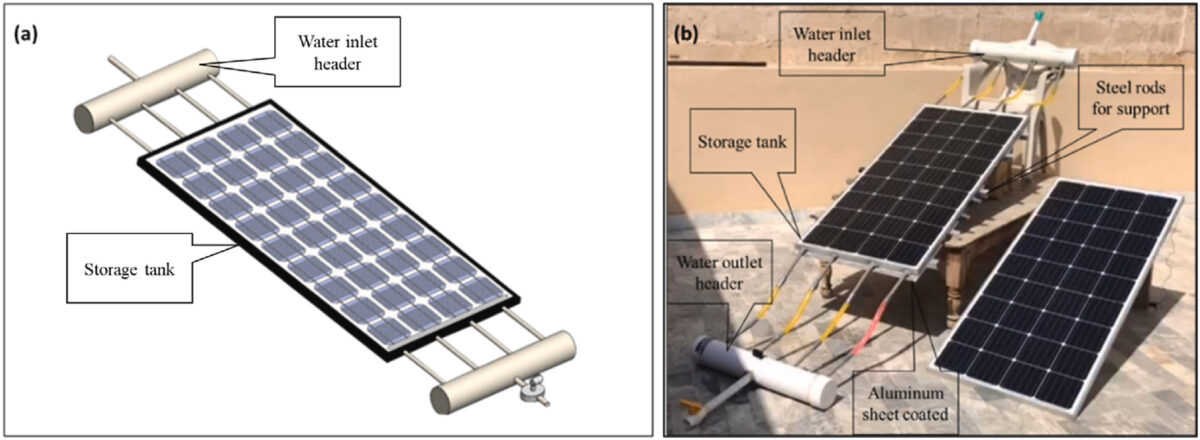Researchers at the Dublin City University in Ireland have proposed a new design for photovoltaic-thermal (PVT) modules based on a water tank that simultaneously provides PV panel cooling and generates hot water for domestic use.
The group said its PVT water collector represents an attractive option to enhance the overall performance of a PV panel, with the storage tank working as a typical gas-powered geyser used for the production of hot water for domestic use.
“In general, gas-fired geysers are widely used in Pakistan to heat water for daily use, and in the last few years, Pakistan is facing a problem of gas load-shedding due to which production of hot water in winter is crucial,” it explained, noting that the proposed PVT solution would represent a Co2 emission-free solution for supplying hot water. “Water from the overhead tank is flown by gravity which is heated in geysers and then utilized in domestic operations.”
The system consists of a 170 W photovoltaic panel connected to a water tank placed at the backside of the PV module itself. The storage tank has a size of 150 cm × 66 cm x 4 cm and is made of wood coated with an aluminum sheet to avoid the degradation of the wood due to water.
“The circuit of the PV module was saved by using a rubber gasket to avoid contact of water with it,” the scientists explained. “Two headers, one for an inlet and one for an outlet, had been included. Five steel rods were bolted at the backside of the wooden sheet for structural support.”
The team compared the performance of the PVT module with that of a reference PV panel without the water storage tank. It ascertained that the PVT panel ensured high heat transfer between the PV surface and the tank, thus being able to considerably reduce the operating temperature of the PV unit. According to the group's calculations, the PVT panel had a 19% higher power yield than its pure PV counterpart.
Popular content
“In addition, the hybrid PVT module was capable to produce hot water which was considered to be an additional advantage,” the academics stated, noting that the PVT panel uses around 50.04% of incoming solar radiation while the PV utilizes only 11.4%. “So, it can be concluded that hybrid PVT can be effectively utilized to produce both electrical energy and hot water from a single system.”
They introduced the system in the paper “Energy and stress analysis of a hybrid photovoltaic thermal module,” which was recently published in Case Studies in Thermal Engineering.
An international research group led by the Imperial College London recently conducted a comprehensive review of all photovoltaic-thermal system designs developed to date at both the research and industry level.
This content is protected by copyright and may not be reused. If you want to cooperate with us and would like to reuse some of our content, please contact: editors@pv-magazine.com.



Great concept… but what happens as the Water gets hot.. will it not degrade the PV Output too…???
Really it was amazing to have new development for pvt in generating electricity as well as hot water at the same time.
Can we heat water and generate electricity with this solar system or can we only do one thing at a time?